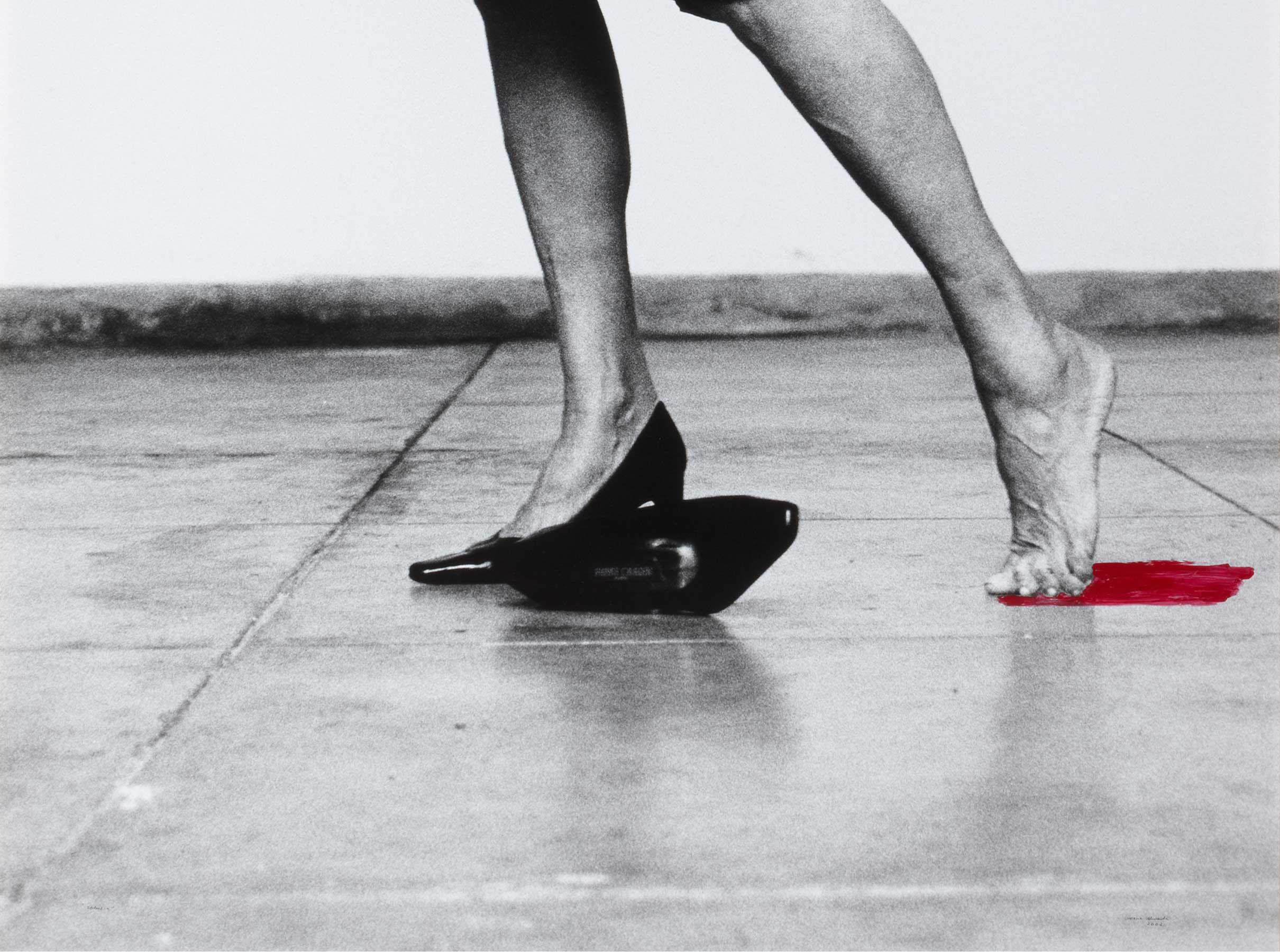Hourglass II
- 2023
- Black noi silk and natural dyed silk twill lightwaight triangle quilt
- 102,9 x 101,6 cm
- Cat. T_97
- Acquired in 2024
Yto Barrada’s Hourglass II (2023) is a textile work using black silk and naturally dyed silk. The piece is arranged geometrically with a color palette that contrasts warm shades of orange with blacks, forming paired triangles converging at their vertices. The choice of materials and use of natural dyes enhance the tactile dimension of the work, creating an interplay between the visual and the material that is essential to its interpretation. Consistently with her previous work, Hourglass II continues her exploration of identity, collective memory, and the cultural history of North Africa. As a multidisciplinary Franco-Moroccan artist, she has refined her artistic practice with influences from postcolonial thought, feminism, and Pan- Africanism in media such as photography, film, sculpture, and installations. This piece encapsulates her interest in microhistories, subaltern knowledge, and everyday acts of resistance.
Hourglass II was created at The Mothership, an ecofeminist art residency and research center founded by Barrada in Tangier. In this space – where artists, botanists, ecologists, and cultural agents collaborate – they hold workshops on natural dyeing and experiment with various methods of cultivating, preserving, and sharing plants and seeds. The dye in the fabrics used by Barrada in this piece comes from pigments extracted from endemic species grown in the center’s garden. The piece’s varying shades are achieved through a prolonged and slow pigmentation process using plants such as chamomile, madder root, and turmeric. The work thus connects color to its botanical origins, reflecting the measured pace intrinsic to the practice of cultivation and artisanal creation. In this way, in contrast to the accelerated dynamics imposed by Western paradigms of productivity, Barrada revisits the traditional processes of the Moroccan textile industry, sustained primarily by women through the years.
As the title Hourglass suggests, the concept of time is central to the work, both conceptually and in terms of form. The composition’s geometric patterns, influenced by the designs typical of Moroccan fabrics, evoke the figure of the hourglass, an archetypal symbol of the passage of time. This visual representation of time, along with the use of common artisanal techniques, seems to invite reflection on the transmission of ancestral knowledge that has been marginalized over the centuries, as well as an appreciation of the work of anonymous creators excluded from the Western narrative. As in previous works, Barrada addresses temporality and memory here, reminding us that personal and collective narratives may also be contained within the artistic object itself.
Barrada’s use of traditional crafting processes is also an act of cultural and ecological resistance, a way of preserving and treasuring artisanal practices in a globalized world dominated by mass production and extractivism. This approach advocates for sustainability versus capitalist exploitation of natural resources, slowness versus immediacy, and connecting with nature versus feverish consumption. Hourglass II thus presents itself as a call to decelerate, to experience one’s surroundings deliberately, and to recover an organic sense of time. The work invites us to consider not only history and memory but also the urgency of recognizing and preserving common techniques and knowledge. Through collective experimentation, Barrada reminds us of the value of the wisdom of the past and the importance of passing it on to younger generations. Her work constitutes a meditation on the continuity and transformation of cultural practices in Morocco and how they are imbued in the flow of time.
Other works by Yto Barrada

